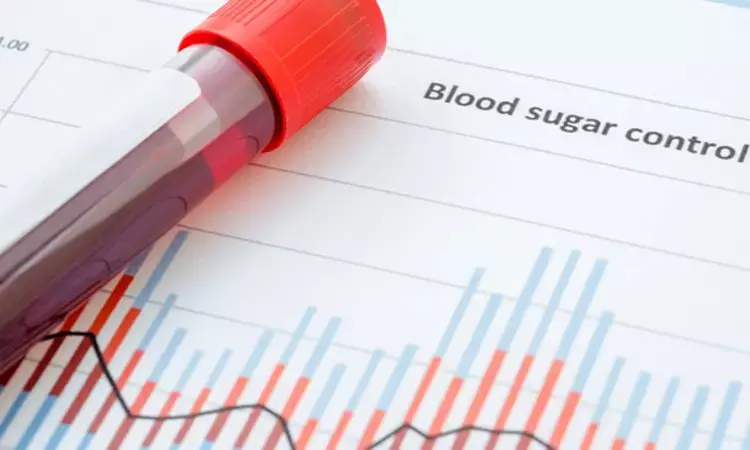- Home
- Medical news & Guidelines
- Anesthesiology
- Cardiology and CTVS
- Critical Care
- Dentistry
- Dermatology
- Diabetes and Endocrinology
- ENT
- Gastroenterology
- Medicine
- Nephrology
- Neurology
- Obstretics-Gynaecology
- Oncology
- Ophthalmology
- Orthopaedics
- Pediatrics-Neonatology
- Psychiatry
- Pulmonology
- Radiology
- Surgery
- Urology
- Laboratory Medicine
- Diet
- Nursing
- Paramedical
- Physiotherapy
- Health news
- Fact Check
- Bone Health Fact Check
- Brain Health Fact Check
- Cancer Related Fact Check
- Child Care Fact Check
- Dental and oral health fact check
- Diabetes and metabolic health fact check
- Diet and Nutrition Fact Check
- Eye and ENT Care Fact Check
- Fitness fact check
- Gut health fact check
- Heart health fact check
- Kidney health fact check
- Medical education fact check
- Men's health fact check
- Respiratory fact check
- Skin and hair care fact check
- Vaccine and Immunization fact check
- Women's health fact check
- AYUSH
- State News
- Andaman and Nicobar Islands
- Andhra Pradesh
- Arunachal Pradesh
- Assam
- Bihar
- Chandigarh
- Chattisgarh
- Dadra and Nagar Haveli
- Daman and Diu
- Delhi
- Goa
- Gujarat
- Haryana
- Himachal Pradesh
- Jammu & Kashmir
- Jharkhand
- Karnataka
- Kerala
- Ladakh
- Lakshadweep
- Madhya Pradesh
- Maharashtra
- Manipur
- Meghalaya
- Mizoram
- Nagaland
- Odisha
- Puducherry
- Punjab
- Rajasthan
- Sikkim
- Tamil Nadu
- Telangana
- Tripura
- Uttar Pradesh
- Uttrakhand
- West Bengal
- Medical Education
- Industry
High Glycemic variability and fasting blood sugar increases mortality risk in diabetes patients

China: A new study suggests that it is crucial to achieve normal and stable glucose levels concurrently since the presence of high glycemic variability and high glucose levels may aggravate the independent risk of premature death in type 2 diabetes patients. The findings of this study were published in Diabetes, Obesity, and Metabolism.
The prevalence of type 2 diabetes has increased at an unprecedented rate due to the growth in obesity and energy-dense diets, which is one of the main causes of premature death. According to researchers, there were 462 million cases of this illness worldwide in 2017, with a projected increase to 7079 cases per 100,000 people by 2030. Yahang Liu and colleagues thus carried out this research. to evaluate the individual and combined effects of mean fasting blood glucose level (M-FBG) and visit-to-visit fasting blood glucose variability (VVV-FBG) on all-cause mortality.
There were 48 843 Chinese individuals with type 2 diabetes in this prospective cohort research. To assess the relationship between VVV-FBG and M-FBG and all-cause mortality, hazard ratios (HRs) and 95% confidence intervals (CIs) were computed using Cox proportional hazards regression models. Restricted cubic splines were used to analyze possible nonlinear connections, and relative excess risk owing to interaction was used to assess additive interaction (RERI). To evaluate the combined impacts of VVV-FBG and M-FBG, Cox generalized additive models (CGAMs) and bivariate response surface models were also applied.
The key findings of this study:
1. A mean follow-up of 6.99 years resulted in the observation of 4087 fatalities overall.
2. Researchers found that patients with values at the 95th percentile of average real variability (ARV) and M-FBG had an elevated risk of premature mortality of 23% and 38%, respectively, compared to patients with values at the 5th percentile of ARV and M-FBG.
3. On both an additive and a multiplicative scale, there was a significant interaction between glycemic variability (ARV) and M-FBG.
4. In comparison to low VVV-FBG and low M-FBG, high VVV-FBG and high M-FBG were associated with the greatest risk of all-cause death.
5. The CGAMs demonstrated substantial synergistic interactions between M-FBG and glycemic variability.
In conclusion, the importance of reaching normal and stable glucose levels concurrently in the management of blood glucose is highlighted by the fact that FBG measurements taken during follow-up might give additional information regarding the potential risk of all-cause mortality.
Future research may be required to define the ideal range of blood glucose variation and to explore the possibility that lower average blood glucose levels and long-term glycemic fluctuation are linked to a lower risk of premature mortality.
Reference:
Liu, Y., Xu, H., Li, J., Yang, Y., Zhang, J., Liu, X., Li, J., Yu, Y., & Qin, G. (2022). Separate and combined effect of visit‐to‐visit glycaemic variability and mean fasting blood glucose level on all‐cause mortality in patients with type 2 diabetes: A population‐based cohort study. In Diabetes, Obesity and Metabolism. Wiley. https://doi.org/10.1111/dom.14826
Neuroscience Masters graduate
Jacinthlyn Sylvia, a Neuroscience Master's graduate from Chennai has worked extensively in deciphering the neurobiology of cognition and motor control in aging. She also has spread-out exposure to Neurosurgery from her Bachelor’s. She is currently involved in active Neuro-Oncology research. She is an upcoming neuroscientist with a fiery passion for writing. Her news cover at Medical Dialogues feature recent discoveries and updates from the healthcare and biomedical research fields. She can be reached at editorial@medicaldialogues.in
Dr Kamal Kant Kohli-MBBS, DTCD- a chest specialist with more than 30 years of practice and a flair for writing clinical articles, Dr Kamal Kant Kohli joined Medical Dialogues as a Chief Editor of Medical News. Besides writing articles, as an editor, he proofreads and verifies all the medical content published on Medical Dialogues including those coming from journals, studies,medical conferences,guidelines etc. Email: drkohli@medicaldialogues.in. Contact no. 011-43720751


